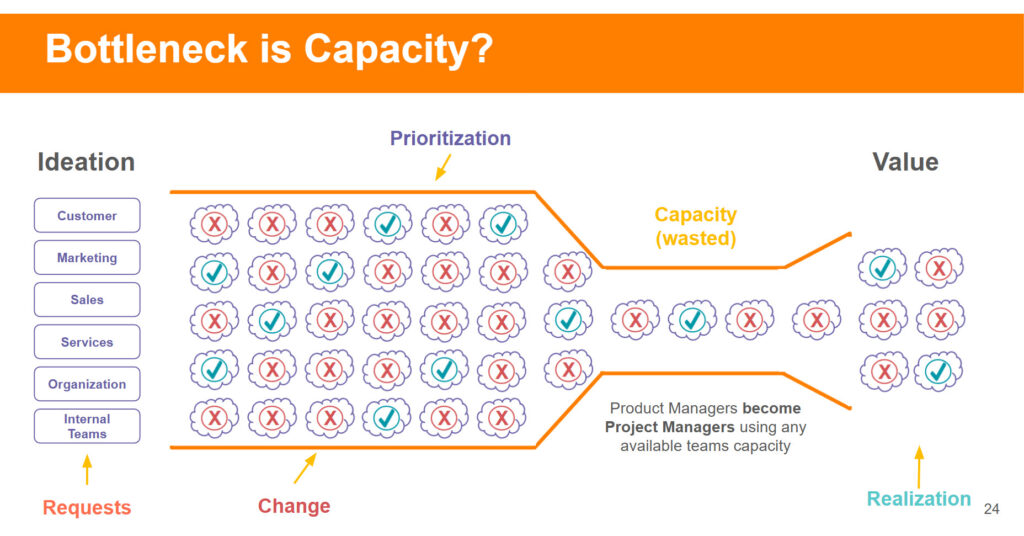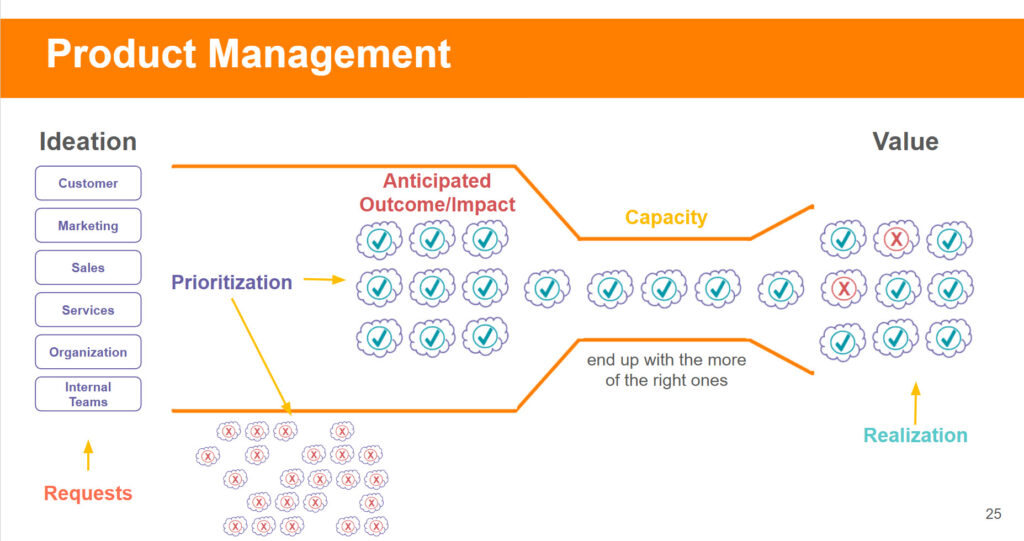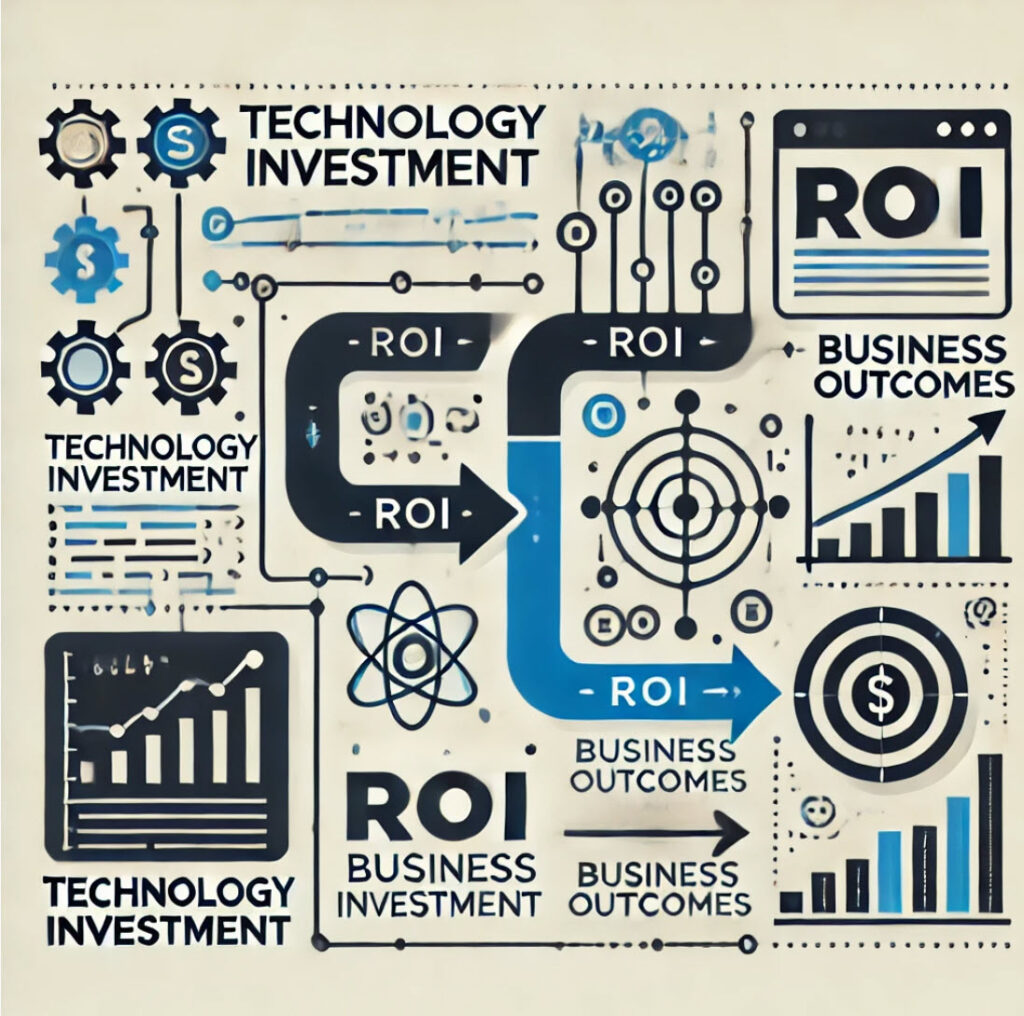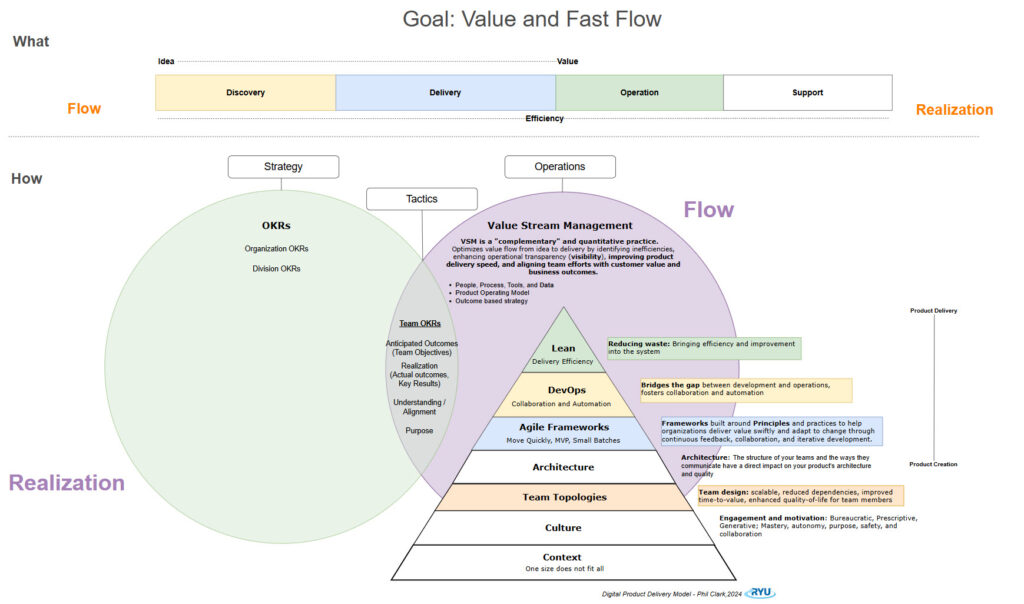8 min read

Setting the Stage: What This Article Is About
Dependencies—a word that can mean many things, but here, we’re talking about a specific kind: cross-cutting dependencies driven by large organizational initiatives or projects that require contributions from multiple teams. These aren’t the day-to-day functional dependencies resolved by moving to cross-functional teams. Instead, we’re addressing dependencies that arise when:
- One team’s outcomes directly impact the success of another team’s efforts.
- Platform or centralized teams require integration or alignment from product teams.
- Teams rely on others to work on their behalf, such as completing a shared service task or enabling foundational capabilities.
This article presents a scalable prioritization framework to help teams balance external requests with core roadmap priorities like growth, performance, and security. Building on John Cutler’s insights on dependencies, it provides practical, outcome-focused strategies to stay aligned with business goals.
Audience:
This article is designed for leaders and practitioners in small businesses and mid-market to mid-sized enterprises—organizations where teams enjoy greater autonomy and operate with fewer bureaucratic layers. While the ideas here reflect my experiences and successes in these contexts, I recognize that no framework is universally applicable. Alternative approaches may be required for larger enterprises or organizations with deeply entrenched dependencies and highly distributed teams.
Dependencies—the word itself feels heavy, like an anchor holding teams back. Every organization faces this challenge, especially when juggling complex projects and cross-functional priorities. Yet dependencies are here to stay.
This became evident during a meeting earlier this week when a program manager reminded the engineering leaders to respond to the data privacy team’s request for integration work. The request is part of a larger initiative to improve data retention management. The effort required several product delivery teams to align their services—a substantial request for teams already juggling demanding and tightly packed roadmaps.
The meeting included only senior engineering and technology leaders, who leaned toward taking responsibility for deciding how to address the request, given their technical expertise. However, as a technology leader, I see this differently. We serve as subject matter experts who clarify and understand the request’s scope and implications. However, the ultimate decision on prioritization belongs to the respective delivery teams, who are best positioned to evaluate priorities based on anticipated outcomes and the potential impact on business results.
By chance, the very next day, John Cutler published an article on dependencies. His insights resonated deeply and aligned with many of the challenges we had been discussing. The timing was remarkable and inspired me to write this article—not to disagree with his ideas, but to build on them. In this piece, I’ll share how I encourage my teams to address this challenge, adding to his perspective with a complementary approach.
Dependencies: The Problem and the Opportunity
John Cutler’s article, “Some Thoughts on Dependencies,” 1 offers an insightful foundation, outlining three common ways organizations handle dependencies. Here’s my interpretation and perspective on his ideas:
- Minimize (Ostrich Approach—head in the sand): Ignore dependencies and expect teams to figure it out independently. This method may work when dependencies are rare, but it often leads to frustration and inefficiency.
- Institutionalize (Bureaucracy Approach): Drowning dependencies in processes and meetings, creating layers of oversight that slow progress.
- Actively Address (Transformer Approach): Proactively tackling dependencies by re-architecting systems, introducing enabling teams, and creating scalable processes.
“Dependencies are not roadblocks—they’re connections. How we manage them determines our success.”
While the “Transformer” approach is ideal, not all organizations can invest in this approach, and not all dependencies are bad. Some are essential for creating cohesive work, like aligning teams on a marketing campaign to ensure consistent messaging. The real challenge lies in managing dependencies strategically to prevent over commitment, delays, and burnout.
Scaling and Context: Does This Work Everywhere?
Before diving into the framework, it’s essential to recognize the context in which it operates. My approach is tailored to small to mid-sized enterprises or mid-market companies. These organizations often have fewer layers of bureaucracy and smaller, more agile teams. This framework may not scale effectively for large enterprises or organizations with massive programs—such as building a fighter jet or managing deeply ingrained systems.
Large-scale organizations often face additional complexities, such as highly distributed teams, deeply entrenched dependencies, and competing definitions of success across departments. For such cases, a hybrid model with stricter organizational mandates may be required, and dependencies might be better addressed by re-architecting systems and rethinking organizational structures. This article focuses on solutions that work well for more flexible, mid-sized organizations, where teams have greater autonomy and can experiment with dynamic prioritization.
Tension and the Need for Scalability
“If everything is a priority, then nothing is.”
This dynamic tension highlights the need for a framework that evaluates all work—regardless of its source—through a consistent lens. Conversations with subject matter experts are essential to understanding the scope and impact of the work. Once that’s clear, teams must collaborate to prioritize their entire backlog holistically.
Dependencies don’t just come from cross-cutting initiatives. Within teams, conflicts often exist between competing types of work, including features, technical debt, risks, and defects. Some team members may prioritize technical debt, seeing it as crucial to maintaining long-term stability, while product managers push for new features to meet market demands. These internal tensions, compounded by external requests, create additional pressure.
Prioritizing “all types of requests” by outcomes and impact becomes essential when dealing with dependencies and conflicting work. A unified, outcome-based approach ensures that all work is evaluated consistently, empowering teams to focus on the most impactful work. This approach scales effectively across teams and initiatives by dynamically reprioritizing based on available information.
Adding to the friction, the team responsible for leading this product-wide or cross-cutting initiative found themselves in an unenviable position. It’s the initiating team’s role to champion the initiative and drive its progress, but this team also bears the burden of reporting back and aligning all the dependent teams. These dependencies are an inevitable part of their work, but they shouldn’t be punished or pressured to force teams into alignment.
Ultimately, alignment falls on the organization. When priorities clash, or deadlines don’t align, leadership must step in to resolve conflicts. Teams should prioritize based on anticipated outcomes aligned with business goals, but the organization is responsible for ensuring those priorities align and scale.
A Framework for Managing Dependencies
Dependencies are inevitable, but the way we address them defines our success. My recommended framework emphasizes three key strategies for effective management: prioritizing anticipated outcomes, optimizing capacity, and adapting through dynamic reprioritization.
1. Unified Prioritization Framework
All requests—whether your team’s roadmap, a cross-team dependency, or a last-minute request—should be prioritized using the same lens: anticipated outcomes. The question isn’t who owns the request or how urgent it feels but rather:
- What is the impact of this work on the organization’s goals?
- Does it move the needle?
- How does it compare to our current commitments?
While prioritization focuses on anticipated outcomes and impact, teams must also consider the cost of delay. Cost of delay means evaluating how postponing a task affects its value and urgency. By incorporating the cost of delay, teams can flexibly sequence work within their capacity, sometimes opting to complete lower-priority tasks sooner to prevent value erosion.
This approach isn’t about perfection. Teams won’t always get it right. However, by applying a structured method, they reduce burnout risks, increase engagement, and focus on delivering measurable results.
2. Capacity Management
Teams need to be realistic about their capacity. In most cases, we will always have more work than resources. If a higher-priority request arises, teams should assess whether to pause or defer it. Prioritization isn’t about dropping commitments; it’s about making intentional trade-offs to focus on what matters most.
Respecting capacity doesn’t mean saying “no” to everything—it means having honest conversations about what’s feasible and prioritizing the highest-value items to the team’s capacity. This approach also ensures that we focus on the right value and do not waste efforts or produce the wrong things.
Burnout often arises when teams feel pressured to overcommit. If everything is a priority, then nothing is. By respecting work-in-progress (WIP) limits, teams can maintain focus, reduce stress, and deliver high-quality work.
However, prioritization by capacity isn’t perfect. Teams may feel frustrated when pausing existing work, but this keeps them aligned with their purpose—one of the key motivators of people. By seeing how changes drive business results, teams retain a sense of meaning in their work. This approach ensures the shift isn’t perceived as arbitrary but as a deliberate, outcome-driven decision.
3. Dynamic Reprioritization
Priorities aren’t static. They shift with new information, emerging risks, and evolving business needs. Dynamic reprioritization ensures teams can adapt when priorities change.
Dynamic prioritization doesn’t mean dropping everything when new requests come in. Instead, teams evaluate current commitments to determine how much work remains and plan when to address the new priority. Reprioritizing requests by anticipated outcome, current commitments, and in-progress efforts balances existing commitments with incoming demands, preventing reactive chaos.


Note: These images are from a slide deck I used last November in a presentation about managing work prioritization based on outcomes and team capacity. The visuals were inspired by Sebastian Borggrewe’s presentation.
Turning Dependencies into Opportunities
Dependencies don’t have to be a burden. When managed well, they enable alignment, collaboration, and innovation. Teams that adopt this framework foster trust, reduce friction, and turn dependencies into opportunities for meaningful progress.
Final Thoughts: A Favorable Framework, Not Perfection
John Cutler’s article provides valuable insights into the complexities of dependencies, though I approach the topic from a slightly different perspective.
Dependencies aren’t going away. This framework offers a favorable, scalable approach for smaller enterprises. However, no framework is perfect. There will always be trade-offs, frustrations, and evolving challenges. What matters is creating a system that fosters transparency, reduces burnout, and aligns teams with purpose-driven outcomes.
How does your organization approach dependencies today? Are there opportunities to apply this framework to foster better alignment and outcomes? Share your thoughts and experiences—I’m always open to exploring better approaches.
Poking Holes
I invite your perspective on my posts. What are your thoughts?
Let’s talk: [email protected]
References
- Some Thoughts on Dependencies” ,John Cutler, January 07, 2025, https://substack.com/@cutlefish/note/c-85026603.






